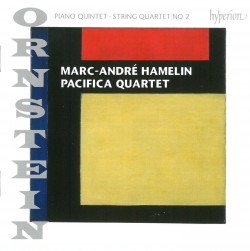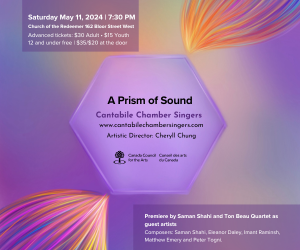 Leo Ornstein – Piano Quintet; String Quartet No.2
Leo Ornstein – Piano Quintet; String Quartet No.2
Marc-André Hamelin; Pacifica Quartet
Hyperion CMA68084
Why has there been a revival of music by composer/ pianist Leo Ornstein (1893-2002)? From early groundbreaking piano pieces onward, his was an extraordinary (and extraordinarily long!) musical life. In 1906 his family emigrated from Russia to the United States where he trained as a piano virtuoso, but after an amazing start he gave up concertizing. His father was a cantor and Ornstein’s Russian-Jewish musical heritage came to the fore. In a modernist context it permeates the Piano Quintet (1927), which I think ranks in quality with the Shostakovitch and Bloch quintets for piano and string quartet. The tempestuous opening movement typifies Ornstein’s rhapsodic process of linking varied phrases and sections that suggest frenzied dances, song-like laments, marches and much more. I particularly liked the slow movement, especially a passage with high violin, mysterious piano repeated notes and chords, and uneasy supporting strings. The Quintet reflects Ornstein’s piano virtuosity; Marc-André Hamelin, who has recorded a notable Ornstein solo disc on Hyperion, is ideal, while the outstanding Pacifica Quartet partners him with confidence, colour and clarity.
Ornstein’s String Quartet No.2 (c.1929) is a more orderly affair. Strings are treated more independently than in the Quintet,and the lower instruments are given solos. The Pacifica Quartet emphasizes the work’s lyrical beauty with well-shaped melodic gestures and sensitive playing of accompanying parts, which through Ornstein’s variety of chord spacings, registers and rhythmic patterns become just as interesting as his melodies.



